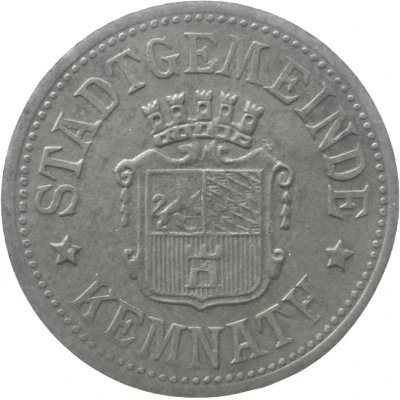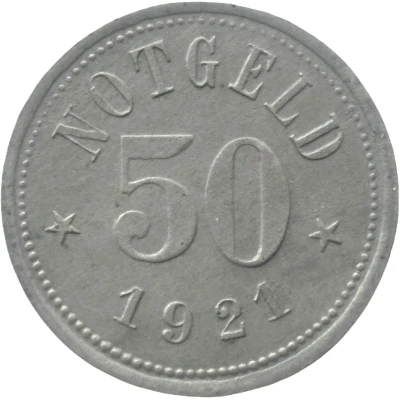


© Willem63 (CC BY-NC-SA)
50 Pfennigs - Kemnath
1921 year| Zinc | 2.4 g | 22.2 mm |
| Issuer | City of Kemnath (Federal state of Bavaria) |
|---|---|
| Period | Weimar Republic (1918-1933) |
| Type | Standard circulation coin |
| Year | 1921 |
| Value | 50 Pfennigs (50 Pfennige) (0.50) |
| Currency | Mark (1914-1924) |
| Composition | Zinc |
| Weight | 2.4 g |
| Diameter | 22.2 mm |
| Thickness | 1.0 mm |
| Shape | Round |
| Technique | Milled |
| Orientation | Medal alignment ↑↑ |
| Demonetized | Yes |
| Updated | 2024-10-04 |
| Numista | N#267915 |
|---|---|
| Rarity index | 93% |
Reverse
Pearl rim, legend surrounding denomination
Script: Latin
Lettering:
NOTGELD
50
★ 1921 ★
Edge
Plain
Comment
The 1921 issue dropped the "6 month expiry after peace" notice.Interesting fact
The 50 Pfennigs coin from Kemnath, Bavaria, 1921, made of zinc, and weighing 2.4 g, is interesting because it was issued during a time of hyperinflation in Germany, when the value of the German Mark was rapidly decreasing. To combat this, the government issued a new currency, the Rentenmark, which was pegged to gold and restricted the amount of money in circulation. The 50 Pfennigs coin was part of this new currency system and was used widely in everyday transactions. Despite the economic challenges of the time, the coin's design, featuring the city's coat of arms and a wreath of oak leaves, remains a symbol of Kemnath's rich history and cultural heritage.